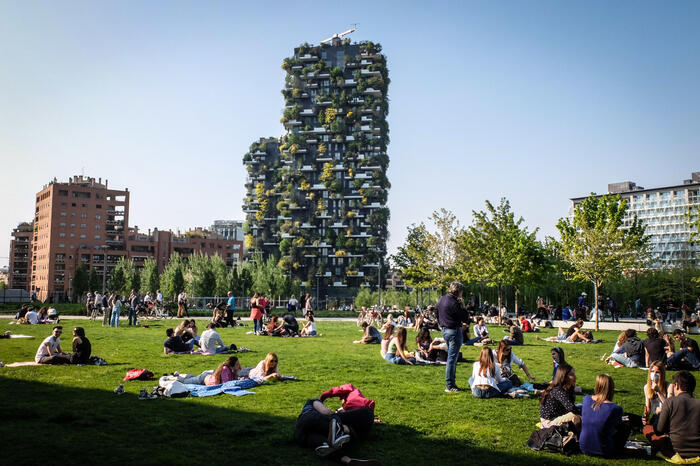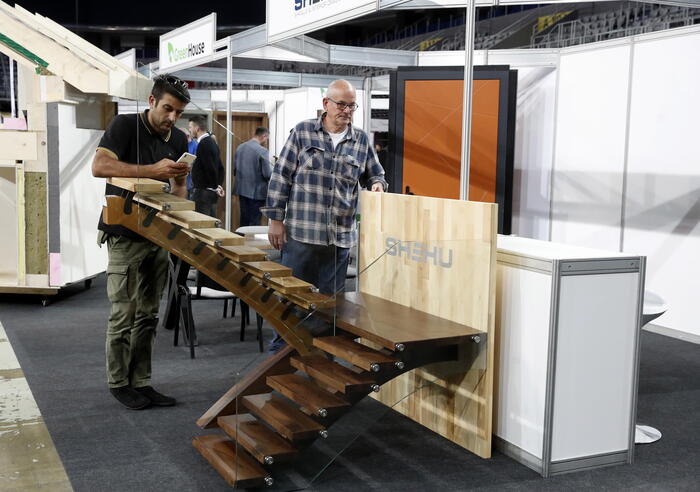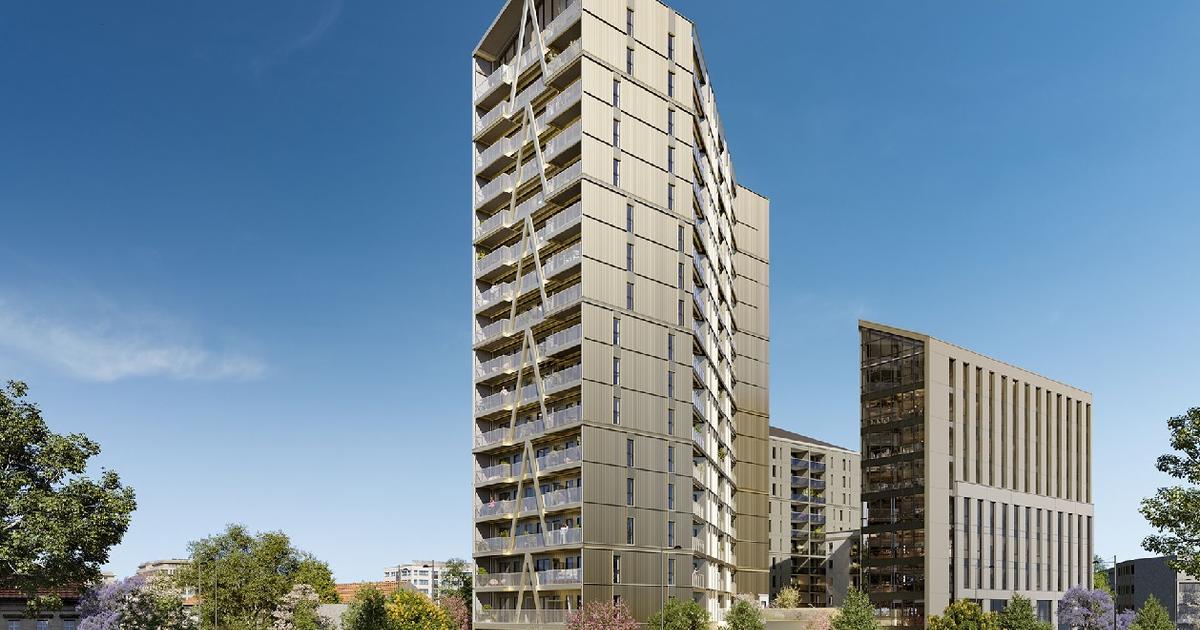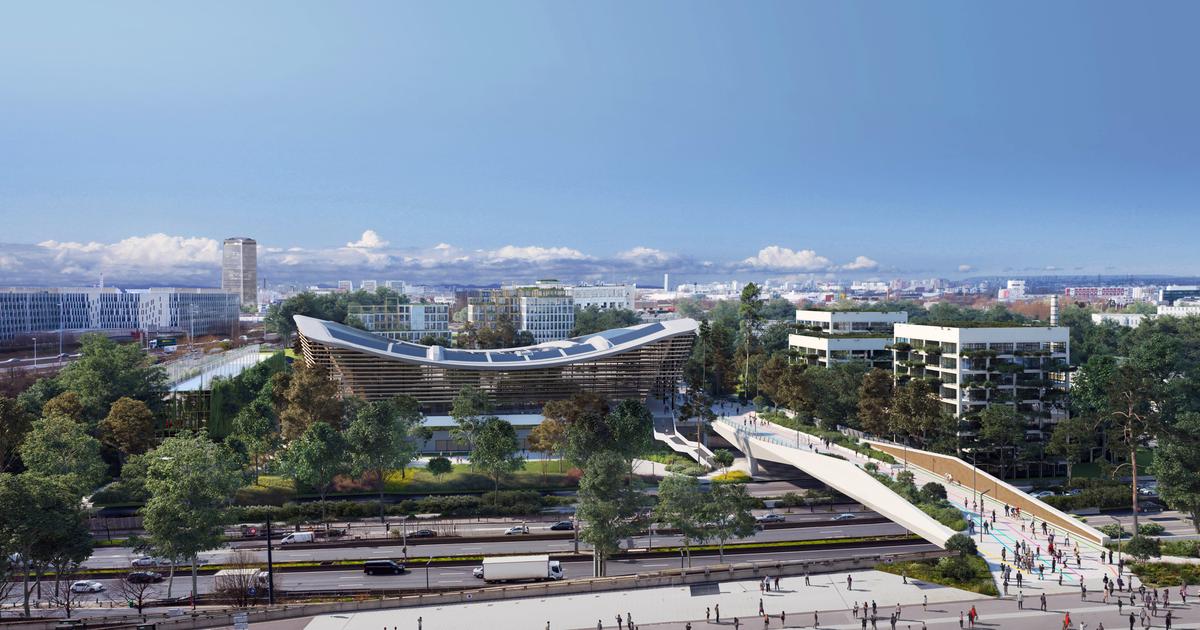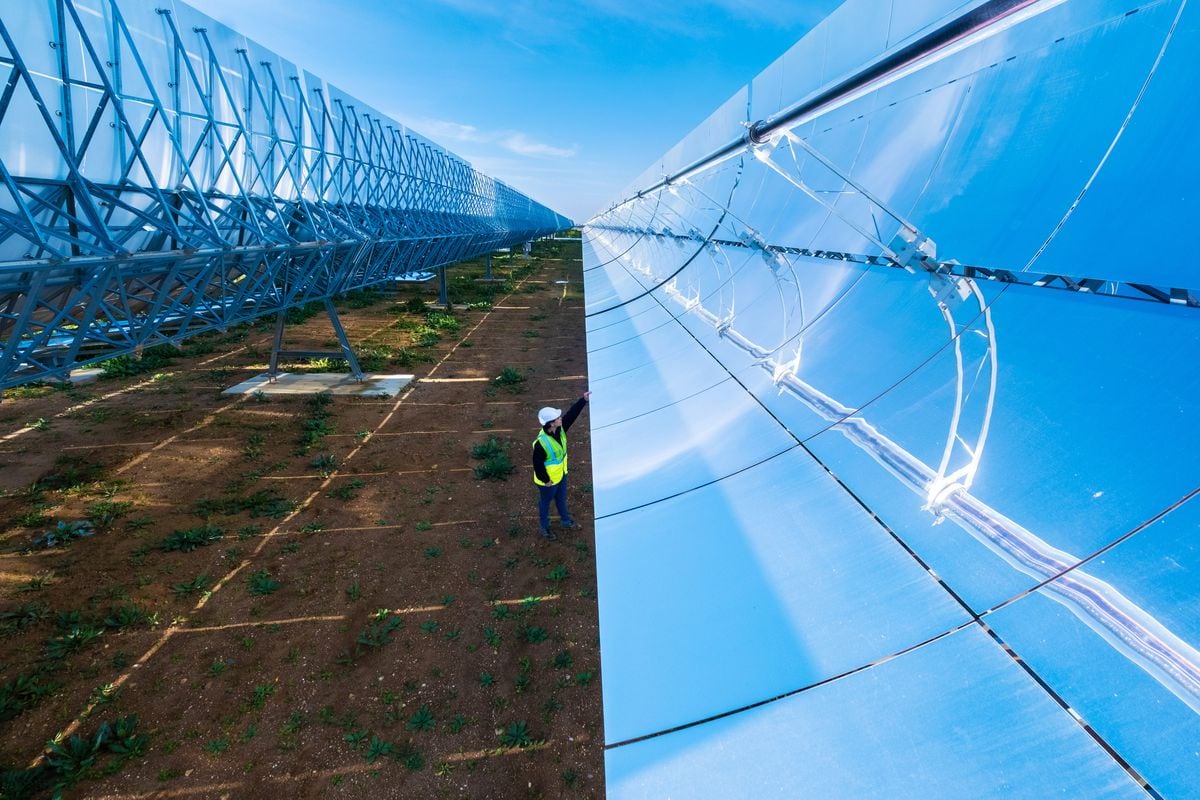EL PAÍS offers the América Futura section openly for its daily and global informative contribution on sustainable development.
If you want to support our journalism,
subscribe here
.
Like most of the year, it is hot in the Antioquia municipality of San Jerónimo.
But for two months, the children of the rural public school 'El Rincón' found a much more comfortable place to attend classes (and play at recess): the sustainable classroom.
This 31-square-meter construction made of woven natural palm, immunized wooden poles and eco-walls with broken tires and glass bottles was designed so that air circulation favors natural ventilation.
This was one of the suggestions made by the community itself when the architects asked them: How do you imagine the first sustainable school in Colombia?
The idea comes from Tagma, a civil association dedicated to developing innovative projects focused on education and sustainability in Latin America.
There are already nine in the entire region, but the Andean country was in the crosshairs since before the pandemic.
The covid also stopped this initiative, which was launched in 2021. The objective was clear: build the first self-sustaining school, with an autonomous water system, solar energy, a compost bin, waste treatment, an orchard, and even a hotel for insects — a small hive with bamboo canes, branches, bark and leaves to attract all kinds of bugs—, in which environmental education jumped from books to practice.
This classroom is used by the children for classes related to the environment.
santiago table
The initiative is not unique in the region: a mobile school in Peru, a 40-square-meter geodesic dome in Uruguay, the Jungle Plan in the Peruvian Amazon... There are more and more public and private examples on the continent, although they are still a exception in the educational model.
And, sometimes, not even its creation makes environmental education guaranteed or transversal.
Alejandro Álvarez Vanegas, professor in the Area of Natural Systems and Sustainability at the private Colombian University EAFIT, believes that there is still "a long way to go" to glimpse an education that values both social and ecological training.
“Another challenge is to recognize our environments and stop thinking that all campuses should be the same.
Climatic, cultural and geographical aspects must be taken into account.
The same manuals are not valid for all countries”.
Alejandro Echeverri, director of URBAM, the Center for Urban and Environmental Studies of the EAFIT University, makes this same criticism of sustainability certifications.
“The criteria of the corporations that issue them are not always on par with the conditions and priorities of the place, in this case Latin America.
I believe that where efforts have to be focused is on seeking intelligent solutions with low environmental impact”.
Using shadows and air circulation well, conscientiously orienting buildings and looking for ways to apply renewable energies are some of the examples he proposes.
"Architecture is concluding extraordinary lessons, but we must make a change in mentality and rethink what the priorities are."
"Is not sufficient"
If the experts agree on something, it is that the mitigation of climate change inevitably goes through education.
But according to the report 'Learning for the planet', published by UNESCO, more than half of the educational policies and curricula examined in the 46 member countries do not even mention climate change.
And only 19% refer to biodiversity.
Bibiam Díaz, education expert at CAF-development bank of Latin America, is as critical as she is optimistic.
“A lot of progress has been made, but sustainability is still seen as a subject, not as something integral in the development of the child's skills.
It's still not enough,” she says.
“We also have to focus on teacher training, because without them it is very difficult to transmit knowledge to students.
And these do want to know more about the environment;
they want to participate actively and we have to give them the tools to do so”.
Federico Mesa and Laura Correa, are two of the architects of the Plan B Arquitectos office, who participated in the design of the sustainable school. Santiago Mesa
For Ana Kondakjian, education coordinator at Tagma, the first network of sustainable public schools, one of these tools is the building itself.
“The premises are pedagogical tools.
Everything that operates in a school has to do with education, ”she points out by phone.
The philosophy of the NGO is to work with the beneficiaries: neighbors, teachers, students and public institutions.
“There has to be a real commitment, especially from the public.
They are the ones who are most interested in this lasting over time.”
Yurley Natalia Berrio, Secretary of Education, Culture, Recreation and Sports of San Jerónimo, agrees and explains without hesitation from her office what the next step is: to replicate the model.
“Now we are in a phase in which the community is nourished by this construction.
We are looking at what part of the curriculum can be brought into the classroom and how to transfer it to other similar rural schools.
We want to get the juice out of it."
Crouched in front of a piece of land with four bushes of cabbage, nine-year-old Javiana wipes sweat with one hand while she removes weeds with the other.
"It's time to be aware, teacher," she says, "if not, no, we won't grow."
Jerónimo, 10 years old, watches her from the door of the El Rincón school, part of the Agricultural Institute, supported with the bearing of a gentleman.
"At least he got that," he complains.
“I have to collect the 'little gifts' from the dogs for the fertilizer”.
Juan Diego Parra, a teacher at the 'El Rincón' school, shakes his head with laughter.
“They prefer to always be here.
Sometimes we harvest coriander and mint and they take it home.
Others remind us that it is his turn to water the plants… It is easy to take care of what one feels is his own.
And they pretty much planted it all,” he says.
It's easy to take care of what feels like yours.
And they planted practically everything
Juan Diego Parra, teacher at the 'El Rincón' school
Involving communities is the basis on which these projects are sustained.
“If you arrive at a village and simply hand over a building, it is difficult for them to appropriate the space,” says Laura Correa, associate architect of Plan B and leader of the project.
In less than 30 days, this classroom, the dome and the school garden were built.
But before that, there were nine months of planning and meetings with parents, the environmental committees of the area and Tagma and the architecture firm, led by Federico Mesa and Felipe Mesa.
"This is the fruit of the collective imagination," adds Kondakjian.
"We are very aware that we come from outside, with the best intentions, yes, but they are the ones who are going to inhabit the space."
A girl doing her homework outside the main classroom.
santiago table
After construction, the NGO, financed by companies and private donors, focuses on following up on these centers.
This is one of the characteristics that Correa highlights the most: “We had already carried out sustainable projects, but this was a step further.
The 'green' look was not an accessory, it was the backbone of everything”.
The experts agree that although there is a real will and, above all, an incipient demand to rethink architecture and the spaces we inhabit and the impact they have on the planet, many ideas remain a declaration of good intentions.
"These schools have to start becoming the norm," says Kondakjian.
"Not the exception."




